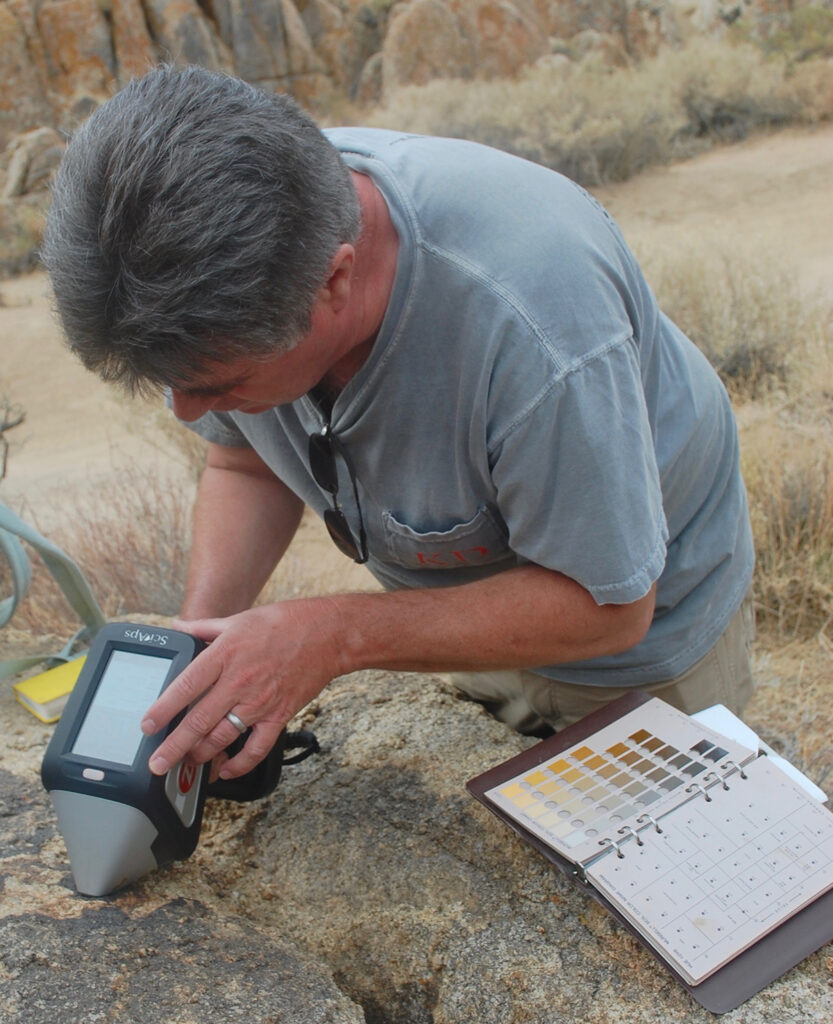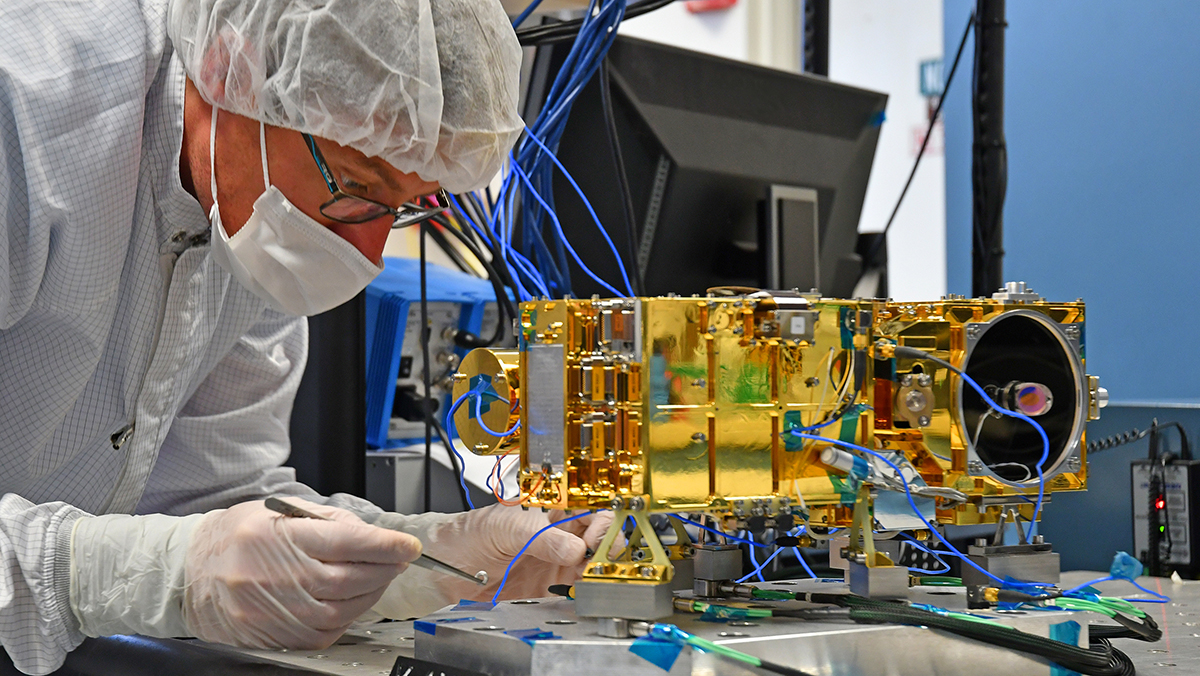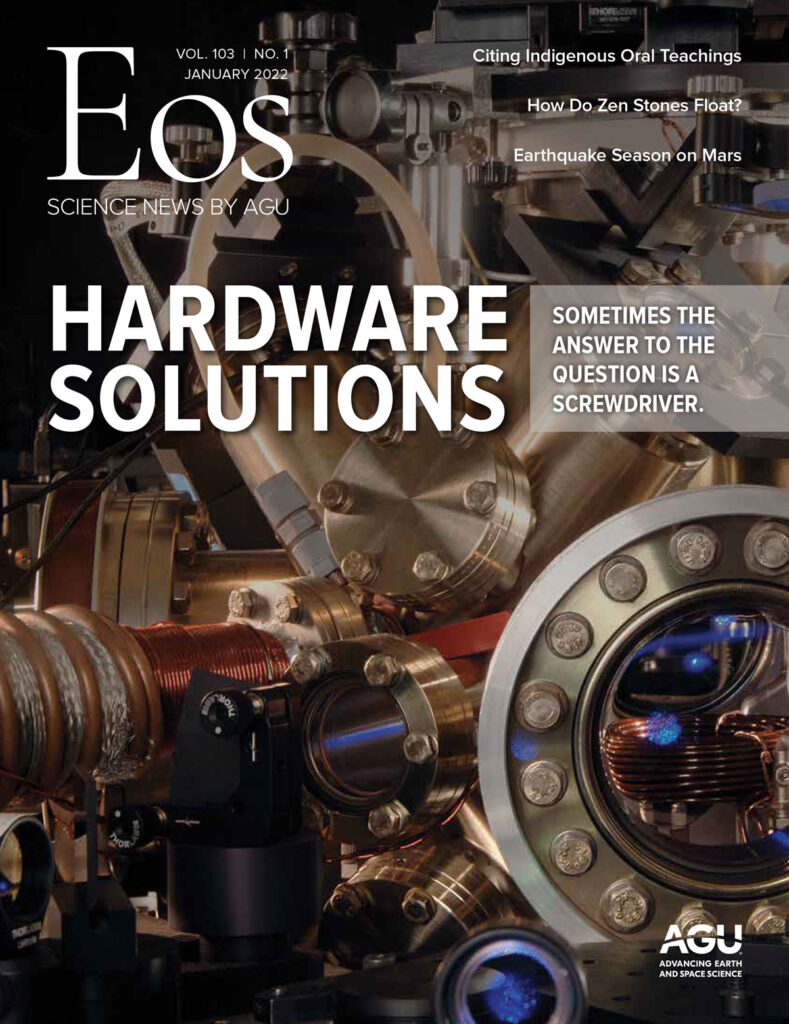A laser may not be the first tool most geoscientists think to use when analyzing geological samples, but the technique known as laser-induced breakdown spectroscopy (LIBS) holds great potential for illuminating the geosciences.
“It’s a very simple technique,” said Russell Harmon, a geochemist at North Carolina State University who has used LIBS for decades.
By rapidly pulsing a high-powered laser at any given sample, a plasma is formed on its surface and the sample’s atoms within are excited. As the atoms decay back to their ground state, they emit light at specific wavelengths, which can be spectrally analyzed to obtain a kind of geochemical fingerprint of the sample’s atomic elements.
Because LIBS can capture the entire elemental composition of a sample, it is a versatile technique that can be readily applied in many different scientific domains. Over his career, Harmon has used LIBS in a variety of ways, including evaluating environmental lead contamination, sussing out obsidian sources, and analyzing carbonates and silicates.
The speed and versatility of LIBS make it a “geochemical tool for the 21st century,” according to Harmon and Giorgio S. Senesi, a researcher at the Italian National Research Council (CNR). It is capable of quantitative and qualitative analysis of the elemental composition of materials such as rocks, minerals, metals, sediments, soils, archaeological artifacts, gases, liquids, explosives, and beyond. It’s also useful both in the laboratory and in the field, on Earth or off it.
“Today there isn’t an area that LIBS hasn’t been applied to by somebody,” Harmon said.
LIBS’s Feats on Mars
Perhaps the most publicized uses of LIBS are out of this world, on Mars. Three LIBS instruments currently scour the surface of the Red Planet on three different rovers: ChemCam (Chemistry and Camera tool) aboard NASA’s Curiosity; MarSCoDe (Mars Surface Composition Detector) on Zhurong, the first Chinese rover; and, most recently, SuperCam on NASA’s Perseverance.
“It actually turns out [LIBS] is extremely adaptable for planetary science,” said Roger Wiens, project leader for the ChemCam and SuperCam instruments and a planetary scientist at Los Alamos National Laboratory.
“LIBS is basically giving us information on almost all [of] the periodic table at once.”
LIBS is able to analyze samples in near-real time with minimal preparation and handling. Importantly, it is especially good at detecting lighter elements that most other techniques, like X-ray fluorescence, cannot pick up. For example, Curiosity’s ChemCam was the first ground instrument to observe hydrogen on the surface of Mars and also found boron, a necessary component for RNA.
“LIBS is basically giving us information on almost all [of] the periodic table at once,” Wiens said.
The technique also synergizes well with the other instruments on each rover, Wiens said. The powerful laser pulses hitting a sample produce something like a “very small version of lightning and thunder,” creating “effectively a round ball of plasma” followed by a shock wave that conveniently removes dust from the material, allowing for cleaner experiments.
In addition to dust removal, the sound produced by LIBS also can tell scientists something about the hardness of a material. Perseverance’s SuperCam is outfitted with a microphone that listens to each shock wave as subsequent laser pulses burrow ever more deeply into the material being analyzed. This act changes the sound that is produced. Using the trend in changing sounds, researchers can figure out the hardness of a material.
“It’s been a bit of a slower revolution, but a revolution nevertheless, in planetary science to start using this technique,” Wiens said.
(Mostly) Limitless Possibilities
Although its possible applications are countless, LIBS, like any technique, has its limitations. For one, LIBS is material-specific because the laser interacts differently with each material it contacts, so it is necessary to calibrate the instrument for each new material being measured.
“It becomes a real challenge to do quantitative LIBS for the Earth sciences community because there are generally not enough standards around to do that,” Harmon said. So the spectral library for the materials often needs to be built.

This challenge arose on Mars—in the back of Perseverance is a set of 22 one-centimeter-diameter standard samples from Earth to calibrate the LIBS readings on Mars. There are also about 500 samples and a clone of the SuperCam LIBS instrument at the Los Alamos Lab to produce the spectral library.
Although there are hurdles to jump, LIBS could be used in future space missions to icy moons, asteroids, and elsewhere. The rapidity of LIBS could have potential for gathering data from the extreme environment of Venus, a planet with intense heat and pressure that would quickly destroy most spacecraft. “LIBS is one of the best techniques to actually do on Venus because we could get a number of analyses in a short amount of time, beam the data back, and get [those] to Earth before the instrument caves in,” Wiens said.
Back on Earth, with the commercial introduction of handheld LIBS units in 2016, the technique is more accessible than ever and is portable for fieldwork, Harmon said. The handheld units are like “a box on a stick” with a tapered nose about the size of a hair dryer. According to Harmon, these affordable tools should be used by a younger generation of geoscientists to collaborate and find new and exciting ways to use LIBS. Building a diverse team and using LIBS to uncover new findings, on Earth and beyond, “that’s a really powerful thing,” Harmon said.
—Richard J. Sima (@richardsima), Science Writer


